Juggling work, life and studying for exams is pretty tough, especially if you have a young family. It can feel near impossible to make time to look after yourself when you’re trying to ‘do it all’, which can lead to exam burn out.
Despite sleeping enough and eating right, I remember finding the constant routine of sitting down and studying for 12 hours stretch on weekends extremely difficult at times. Heck, I already do that on weekdays at the office!
So this is what we’ll focus on today: how to have the right sitting posture with a series of effective desk stretches that will boost mobility and study focus, while minimizing lower back pains and shoulder aches that come with prolonged sitting. All you need is 10 minutes, with the aim to do this every hour (or a few) during your study break.
Sounds yummy? Let’s try it!
- The three golden rules of desk sitting
- 13 effective desk stretches for better mobility
- Rotating neck roll – slowly does it
- The Neck Stretch to alleviate tension
- The Shoulder Shrug – Neck, shoulders and spine
- Wrist & Forearm Stretch
- The Hand & Finger Stretch – 3-in-1
- The Chest and Pec Stretch
- Triceps & Side Stretches
- The Upper Back & Lat Stretch
- The Seated Twist
- The Cat Cow Stretch
- The Chair Pigeon
- The Chair Forward Fold – Calm and Destress
- The Hamstring Stretch
The three golden rules of desk sitting
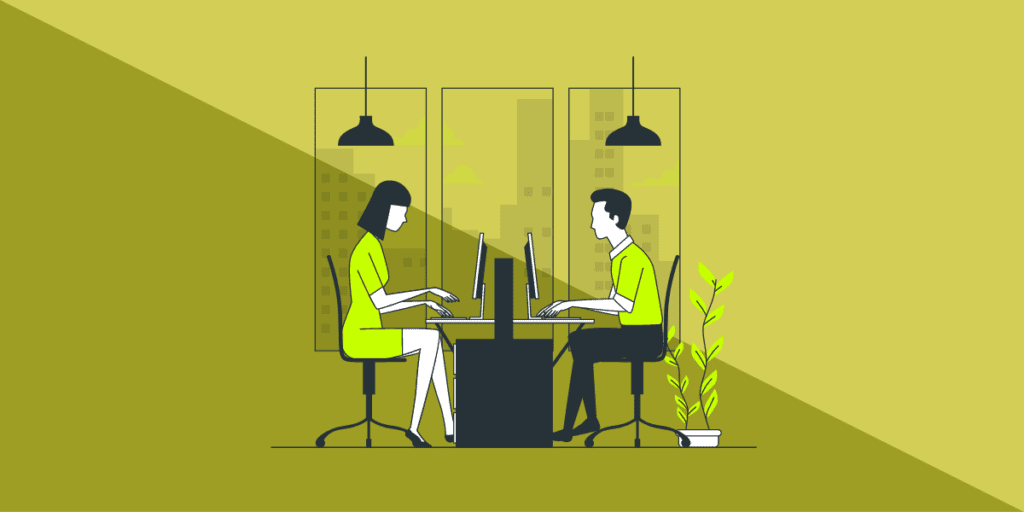
Sit on your sitting bones, NOT your tailbone
When you sit, do not slouch.
Sit on the ‘pointy bony bits in your butt’ (ischial tuberosities) rather than the ‘flat bony bit at the base of your spine at the top of your butt’ (coccyx) so your butt isn’t tucked under you, and open your chest up so that the ‘pointy bony bit on the top of your shoulder’ (acromion) points straight upwards, rather than up and forwards.

This will give you a good basic idea of how to properly sit. It may be really hard to do both of these things from a coordination standpoint, but just try to experiment with it till you can activate the muscles to do it.
When you first practise this, it will feel uncomfortable, tiring or sore at the beginning.
This is expected because you have bad posture, in a word, because the muscles you use to hold yourself up are weak. The discomfort is those muscles trying their damnedest to hold you up despite their weakness. They will get stronger over time. Just do your best and keep going.
“The best posture is the next posture”
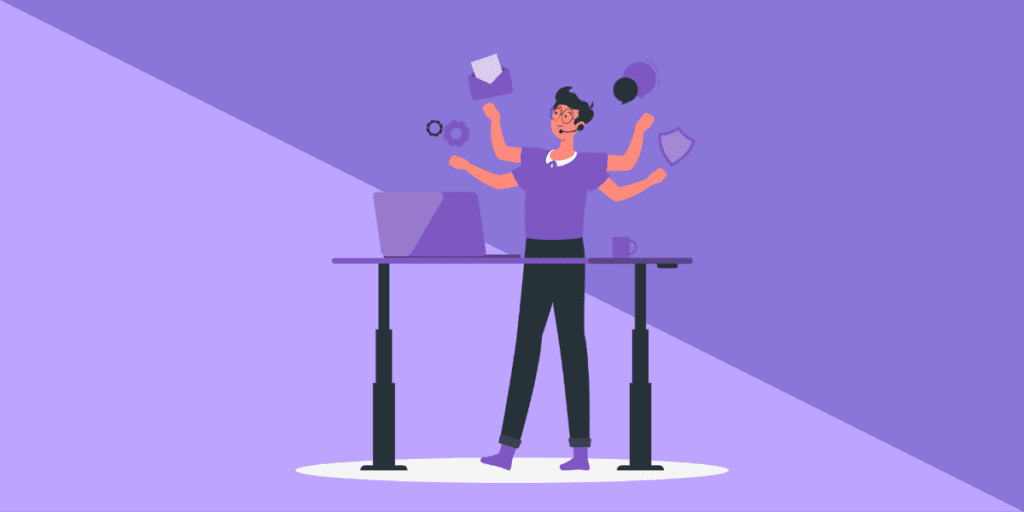
This is often quoted in wellness discussions around posture, and it holds the truest.
Don’t hold any one posture for extended periods. Whether it’s a simple shift of weight, or moving from sitting to standing, make sure your posture changes every now and then to make sure your core muscles stay engaged, and you’re mentally aware of how you’re sitting or standing.
There isn’t one best posture. Instead, emphasis should be on changing your posture periodically.
Want good sitting posture? Fix your habits. Stretches complement, they don’t correct.
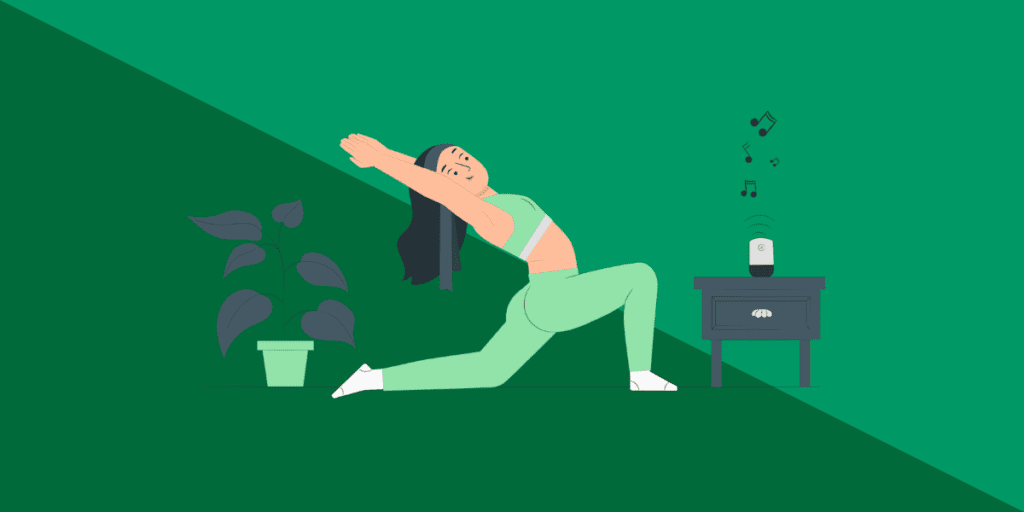
Need to fix your posture? You need to first fix your habits.
Here’s where most postural blogs, and trainers go wrong. 30 minutes of stretching every day and an hour at the gym 3 times a week won’t offset the 75+ hours a week you probably spend sitting at your office, sofa, computer, etc.
All the helpful stretches you find on the internet (and indeed, in this article) are not going to help your terrible posture to magically become better. The stretches and exercises will make your attempts at good posture EASIER.
Having good posture intentionally, by holding your body in positions of good posture is 90% of the work.
What about Posture Correctors? Posture correctors that help you to stand with good posture are not recommended.
Although they are help you maintain a good posture, using them doesn’t work the muscles that should be holding you up in the longer term, which causes those muscles to weaken.
This means it will actually become harder to stand with good posture the longer you wear them. Focus instead on strengthening your body and actively trying to stand with good posture.
13 effective desk stretches for better mobility
As mentioned earlier, stretches and exercises will make your attempts at good posture easier, limbering up your joints and engaging your core muscles.
It’s important to do them, but they do not replace a correct posture. You need both.
So which are the best mobility stretches that give you the best bang for your buck? We’ve identified 13 of the best ones that you can do right at your desk – no excuses then, let’s give it a go!
Rotating neck roll – slowly does it
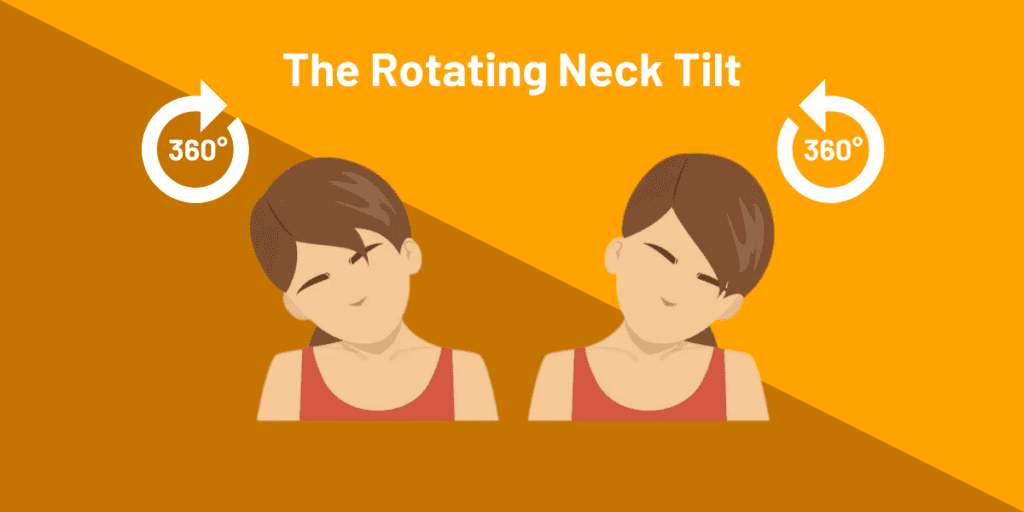
- Benefits: Releases tension from the neck, which builds up after long work sessions.
- How to do it:
- Start with a gaze up to the ceiling, keeping your neck long.
- Then bring your left ear down and hold for a few beats, before rolling your head down toward the ground, bringing your head to your chest.
- Hold again, and finally roll your head to the right and bring your right ear to your right shoulder.
- Throughout the exercise, inhale and exhale in a controlled manner.
- Repeat three times and switch directions.
- Pro tips: Avoid if you have any issues or injuries to the neck or cervical spine. Neck rolls get a lot of stretching done in a short time, but do them very slowly – at least 5 seconds per rotation, and don’t force your neck to ‘stretch as much as possible’. Do what feels good to you.
The Neck Stretch to alleviate tension
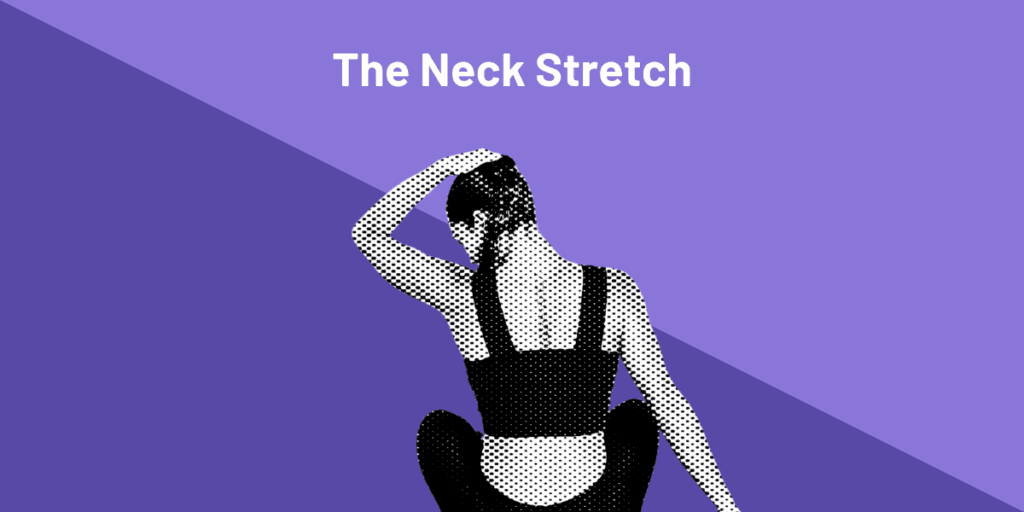
- Benefits: A variation of the neck roll, this also relaxes the shoulders as well as easing neck stiffness and pain.
- How to do it: Sit up straight in your chair, with your hands on your knees. Slowly roll your head to one side until your ear touches your shoulder – use your hand to gently push your head down, and the other to push your opposite shoulder in the opposite direction.
- Pro tips: As is with any neck exercise, please be gentle. This is a very delicate stretch that only requires light pressure.
The Shoulder Shrug – Neck, shoulders and spine
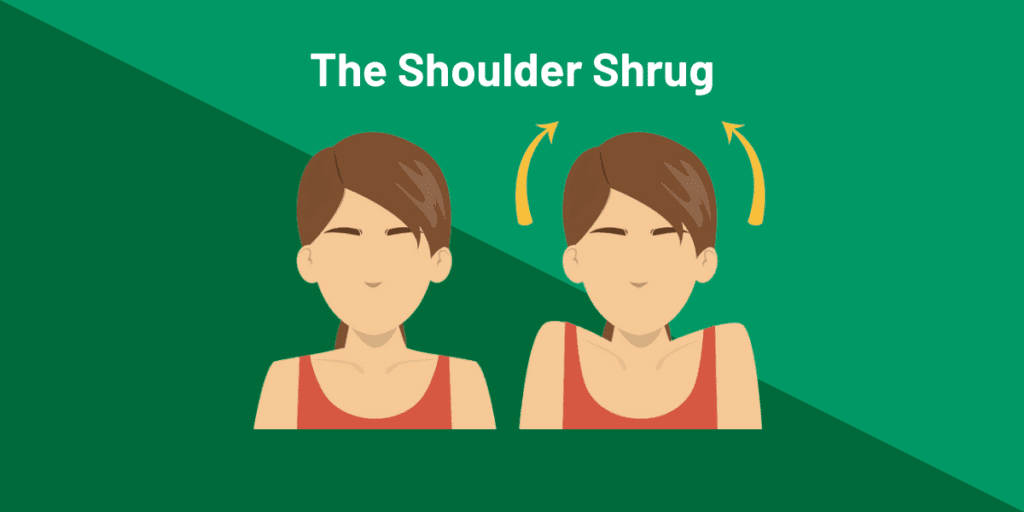
- Benefits: Shoulder shrugs simultaneously relaxes the neck and shoulders and strengthens, thus helping prevent further neck pain and stiffness.
- How to do it:
- Sit up straight in your chair, with your arms on your sides, palms facing inwards.
- Inhale and slowly bring your shoulders as high up towards your ears as you can.
- Lower your shoulders back down while exhaling.
- Aim for 20 repetitions each time you do this.
- Pro tips: While doing this stretch, take the opportunity to straighten your back and give your spine a little stretch as well!
Wrist & Forearm Stretch

- Benefits: With constant typing, tapping and writing, this stretch is especially important to carry out during those long work and study sessions. This helps reduce stiffness and increases your wrists’ range of motion.
- How to do it:
- Extend your arm in front of you with your palm up.
- Bend your wrist, pointing your hand toward the floor.
- With your other hand, gently bend your wrist farther until you feel a mild to moderate stretch in your forearm.
- Hold for at least 15 to 30 seconds. Repeat 2 to 4 times.
- Repeat steps 1 through 4 of the stretch above, but begin with your extended hand palm down.
- Pro tips: Don’t overdo it! Your forearms and wrists should feel a moderate stretch. Resist the temptation to push further – it’s not going to ‘help it more’.
The Hand & Finger Stretch – 3-in-1

- Benefits: With constant typing, tapping and writing, this stretch is especially important to carry out during those long work and study sessions. This three-in-one stretch helps reduce stiffness and increases your fingers’ range of motion.
- How to do it:
- Tight Fist: Make as tight a fist as you can and squeeze hard for a few seconds. Release and shake your hand loosely.
- Tiger Paw: Open your palm and curl your finger tips. Tense your fingers and palm, like you were going to do a karate chop. Hold it for a few seconds, then release and shake your hand loosely.
- Spread Wide: Open your fingers and palm wide, spreading your fingers as wide as you can. Hold it for a few seconds, then release and shake your hand loosely.
- Repeat a few times.
- Pro tips: You don’t have to follow the exact order as described. Bring out your inner finger-jutsu, shake it up and do different combinations!
The Chest and Pec Stretch

- Benefits: A long study session unfortunately encourages hunched shoulders. This stretch will gently remind your spine to align, as well as give your shoulders a stretch in the opposite direction to when you’re hunched over.
- How to do it:
- Seated or standing, interlock your fingers, bend your elbows and raise your arms above your head.
- Gently squeeze your shoulder blades together and move your elbows and hands backward.
- Repeat a few times.
- Pro tips: Your hands should not be resting against your head. Your shoulder blades should be doing all the work, stretching your shoulders and chest. Try varying hand heights – hands behind head, hands on top of head, hand a few inches above head to emphasize different areas.
Triceps & Side Stretches
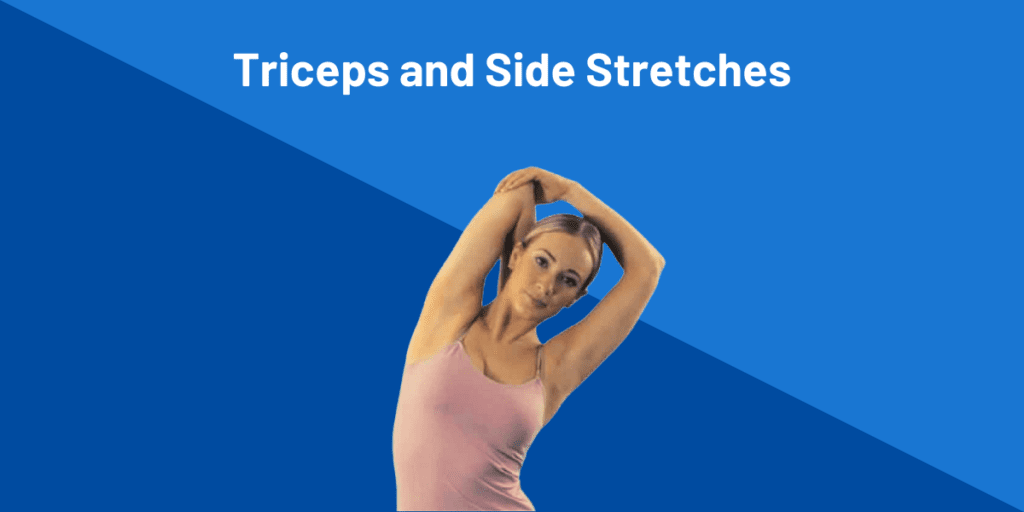
- Benefits: Similar to the Chest and Pec stretch, this refreshes your study hunch, as well as stretching your sides and lats.
- How to do it:
- Sit or stand upright with your arms hanging loosely at your sides.
- Raise your right arm up and bend it so that your right hand can grasp the back of your left shoulder.
- Raise your left arm and using an overhanded reach (palm down), grasp your right elbow and gently pull to stretch the tricep and shoulder.
- When you feel the stretch, release and switch sides for a complete set.
- Repeat a few times.
- Pro tips: Lean in the direction you’re pulling to get a deeper stretch, especially for your sides.
The Upper Back & Lat Stretch

- Benefits: Hitting your shoulders, forearms, lats and upper back, this is an all-in-one that you can easily do while seated.
- How to do it:
- Hold both arms above your head.
- Link your hands with your palms facing upwards.
- Reach as high as possible.
- You should feel your shoulders stretching.
- Repeat several times.
- Pro tips: When reaching up, try to lengthen your arms and shoulders upwards as much as possible. Every little additional effort benefits your flexibility.
The Seated Twist

- Benefits: Seated Twists engage your spine, upper back, hips, neck and arms. Besides enhancing flexibility, it also keeps the joints across your upper body active.
- How to do it:
- While seated, hold the back of your chair with both hands, inhale and slowly turn towards the right, twisting the torso from the hips.
- Gaze behind you complete and exhale completely.
- Repeat for the other side.
- Repeat for a few cycles.
- Pro tips: When twisting, engage your entire core (i.e. ‘harden’ your torso muscles). Engaging like this builds more core awareness which will further benefit your posture when you go back to work.
The Cat Cow Stretch

- Benefits: This complementary poses stretches the entire spine and improves spinal mobility. By arching the back in ‘cow’ pose, you stretch the front torso and chest. The ‘cat’ pose stretches the back of the torso and shoulders.
- How to do it:
- Sit up straight in your chair, engaging your abs with your feet flat on the floor if possible.
- Inhale and arch your back (leading with the chest) and look up towards the ceiling.
- Lift your chin and allow your arms to relax. Exhale, round your spine and let your head drop forward slowly.
- Tuck your chin and allow your shoulders to roll forward. Repeat five times, moving fluidly between cat and cow poses.
- Pro tips: If you have any neck or cervical spine issues, keep the neck in line with the torso throughout these poses.
The Chair Pigeon
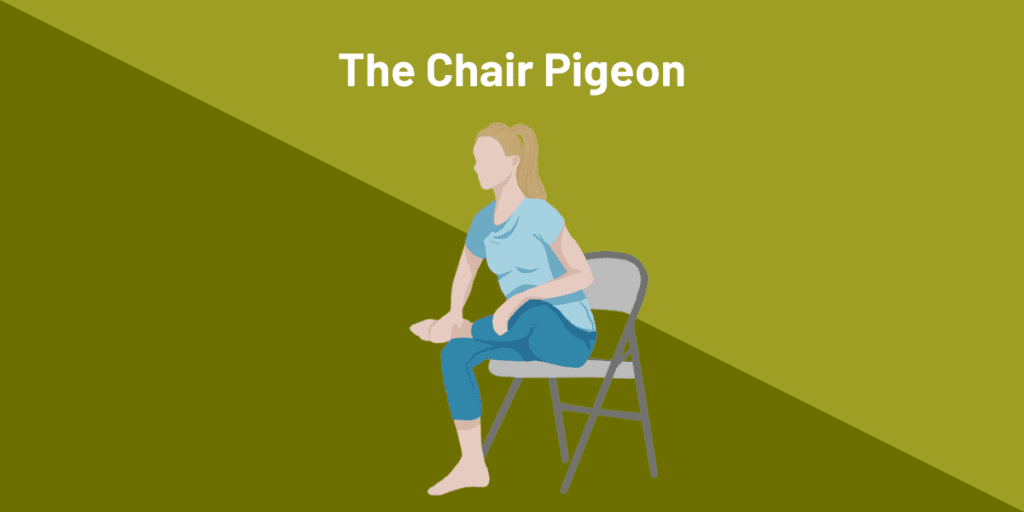
- Benefits: Especially beneficial for those with tight hips, this is a stretch that focuses on the hips but also gives your back a bit of stretch too.
- How to do it:
- Bring your right knee up to the chest and give it a strong hug. Gently rotate your knee outward and ankle inward, resting your ankle on your left thigh, just above the knee.
- If you feel a stretch already, stay there. If not, hold onto the seat of the chair and breath in to lengthen the spine. Bend forward from the hip, keeping the spine straight and long. Go as far as comfortable for you, then allow the spine to round gently to get an extra back stretch.
- Hold this position for a few slow breaths, then slowly rise back up.
- Do the same steps for the other side, and repeat a few times.
- Pro tips: Go slow. If you have knee issues and can’t bring your ankle all the way onto the opposite thigh, straighten your lower leg and rest your ankle anywhere, as low down as comfortable, on the straight leg.
The Chair Forward Fold – Calm and Destress

- Benefits: A seated forward fold lowers your head below your heart, which can have a calming effect. This pose reduces stress and stretches the spine and hamstrings.
- How to do it:
- Sit up straight in your chair, arms relaxed at your sides.
- Exhale and hinge from the hip, slowly lowering your hands to the floor (or if not, on thighs or shins).
- Slowly round your upper back, lowering your chest in between your legs and relaxing your head and neck down. Allow your shoulders to relax and round.
- Stay for five breaths. Inhale and slowly roll up, lifting your head up last. Relax your shoulders back and down.
- Pro tips: Avoid if you have high blood pressure or eye issues, such as glaucoma or detached retinas.
The Hamstring Stretch

- Benefits: Give your hips and hamstrings more flexibility and mobility with frequent hamstring stretches.
- How to do it:
- Sit up tall at the edge of your seat, rooting your sit bones into your seat.
- Place your right foot flat and firmly on the ground.
- Extend and straighten your left leg outwards, with your heel on the ground and engaging your hamstring (muscles at the back of your leg).
- Slowly fold forward from your hips while exhaling, reaching your chest or sternum towards your upper thigh. Hold your left leg with your left hand as far down as comfortable.
- Allow your head to relax and hold that position for a few breaths.
- Repeat for the other side, and repeat for a few more cycles.
- Pro tips: This is a stretch that gets easier to perform the more you do it. Be patient with yourself and don’t overstretch.
How did you find the exercise stretches above? I hope they help reduce lower back, shoulder and neck pains 🙂 Let me know if you have any tips or favorite stretches to share below!
Meanwhile, here are other relevant articles you may find useful: